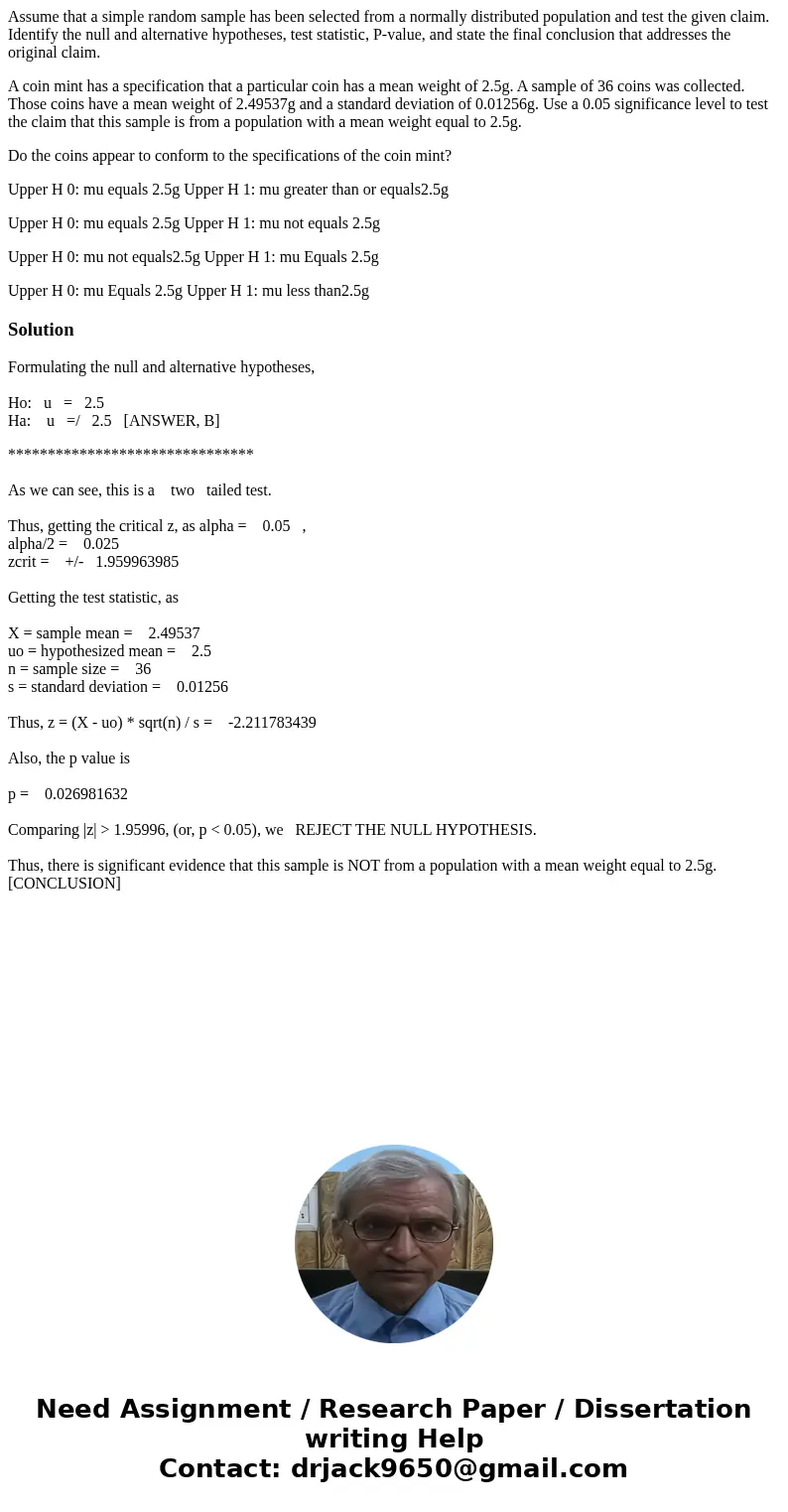Assume that a simple random sample has been selected from a
Assume that a simple random sample has been selected from a normally distributed population and test the given claim. Identify the null and alternative hypotheses, test statistic, P-value, and state the final conclusion that addresses the original claim.
A coin mint has a specification that a particular coin has a mean weight of 2.5g. A sample of 36 coins was collected. Those coins have a mean weight of 2.49537g and a standard deviation of 0.01256g. Use a 0.05 significance level to test the claim that this sample is from a population with a mean weight equal to 2.5g.
Do the coins appear to conform to the specifications of the coin mint?
Upper H 0: mu equals 2.5g Upper H 1: mu greater than or equals2.5g
Upper H 0: mu equals 2.5g Upper H 1: mu not equals 2.5g
Upper H 0: mu not equals2.5g Upper H 1: mu Equals 2.5g
Upper H 0: mu Equals 2.5g Upper H 1: mu less than2.5g
Solution
Formulating the null and alternative hypotheses,
Ho: u = 2.5
Ha: u =/ 2.5 [ANSWER, B]
*******************************
As we can see, this is a two tailed test.
Thus, getting the critical z, as alpha = 0.05 ,
alpha/2 = 0.025
zcrit = +/- 1.959963985
Getting the test statistic, as
X = sample mean = 2.49537
uo = hypothesized mean = 2.5
n = sample size = 36
s = standard deviation = 0.01256
Thus, z = (X - uo) * sqrt(n) / s = -2.211783439
Also, the p value is
p = 0.026981632
Comparing |z| > 1.95996, (or, p < 0.05), we REJECT THE NULL HYPOTHESIS.
Thus, there is significant evidence that this sample is NOT from a population with a mean weight equal to 2.5g. [CONCLUSION]

 Homework Sourse
Homework Sourse